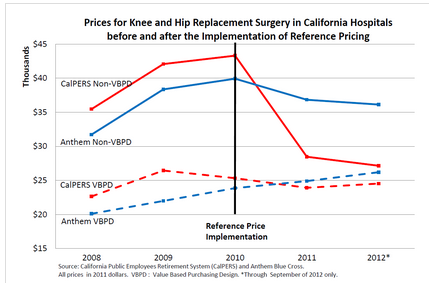12 Aug 2013 Health Care Odds & Ends: The Ugly, The Bad, and The Good
 Okay, having given Clint Eastwood a bit of a smack with the last blog post, let’s give him some due with this one and use his contribution to categories to look at some the recent goings on in health care.
Okay, having given Clint Eastwood a bit of a smack with the last blog post, let’s give him some due with this one and use his contribution to categories to look at some the recent goings on in health care.
The Ugly:
– IPAB Lite: It seems Oregon has its own version of the Independent Payment Advisory Board. According to the Wall Street Journal,
Oregon’s Health Evidence Review Commission, or HERC, claims to be merely concerned with what supposedly works and what doesn’t. Their real targets are usually advanced, costly treatments. That’s why HERC, for example, proposed in May that Medicaid should not cover “treatment with intent to prolong survival” for cancer patients who likely have fewer than two years left to live. HERC presents an example to show their reasoning for such a decision: “In no instance can it be justified to spend $100,000 in public resources to increase an individual’s expected survival by three months when hundreds of thousands of Oregonians are without any form of health insurance.”
The WSJ notes that ObamaCare expressly forbids IPAB from doing these sorts of things. On the other hand, ObamaCare doesn’t give the President the power to grant waivers to health care plans, to suspend the employer mandate, or allow Congressional staff to put their federal contribution toward insurance on the exchanges. At this rate, IPAB will soon be invading our TV screens commanding us to exercise.
– The Dishonor System. Chris Conover goes into considerable detail on the incentives that some people will face to commit fraud in order to qualify for tax subsidies on the ObamaCare exchanges. It’s a lengthy read but well worth it—however, you might want to read it in parts if you find it too depressing at times.
The Bad:
–ObamaCare Co-Ops. Among the Co-Ops created under ObamaCare, the HHS Office of Inspector General “found that CO-OPs reported limited private monetary support and many CO-OPs’ estimated in their applications budgeted startup expenditures that exceeded available funding.” Furthermore, OIG
saw little evidence of private monetary support in any of the 16 applications we reviewed. Additionally, 11 of 16 CO-OPs reported estimated startupexpenditures in their applications that exceeded the total startup funding ultimately provided by CMS.
More here at the Washington Examiner. Oh, and most of the Co-Ops have failed to file required tax documents, according to a Washington Examinerinvestigation. One wonders what their treatment would be if they were “Tea Party Co-Ops.” Lois Lerner was unavailable for comment.
–Exchanges=Identity Theft Haven? Looks like the federal government won’t know if proper safeguards to protect customers’ identities on the exchanges will be up and running on time. HHS has missed a number of deadlines for implementing these safeguards, and according to another HHS OIG report, if “there are additional delays in completing the security assessment and testing, CMS may have limited information on the security risks and controls before the exchanges open.” Well, we are only about seven weeks from the exchanges opening. Surely nothing else could go wrong, could it?
The Good:
-Consumers Can Shop For Health Care—Even Big Ticket Items! In 2010, Wellpoint BlueCross entered into an agreement with CalPERS employees to pay for hip and knee replacements in a new way. Noticing that about 46 hospitals and other centers charged an average of $30,00 for these procedures, Wellpoint agreed to pay for the full surgery if the CalPERS patients agreed to have the procedure done in one of the 46 facilities. If the patient went outside of that network, he’d have to pay the difference. Here is a graph from a study of the program. Look at the top two lines:

As John Goodman notes in his blog:
The [top] red line represents the average cost for CalPERS patients who went outside the network (about 30% of the total). Beginning in 2010, they undoubtedly told the providers they had only $30,000 to spend. As the figure shows, the cost of care at these hospitals was cut by one-third in the first year and continued heading toward the average “network” price over the next two years.
This is dramatic evidence that when patients are responsible for the marginal cost of their care (and therefore, providers have to compete on price) health care markets become competitive very quickly. Remember, the insurer is not bargaining with these out-of-network providers. The patients are.
Look at the uppermost blue line. These are (control group) patients who are not telling providers they have only $30,000 to spend. Nonetheless, their price/cost of care begins declining in 2010 as well. This is exactly what would happen in the market for canned corn or for loaves of bread. People who comparison shop affect the price paid by those who don’t.
Now ask yourself this very important question: Who is more powerful at controlling health care costs? Huge third-party bureaucracies negotiating with providers? Or patients paying the marginal cost of their care?
This is where our health-care system should be heading. Under ObamaCare, though, we are headed in the opposite direction.



